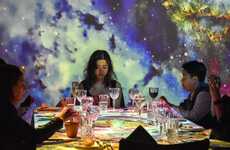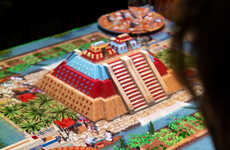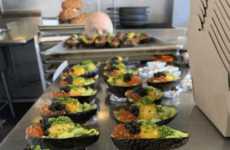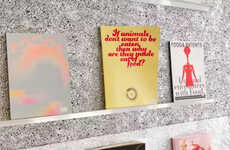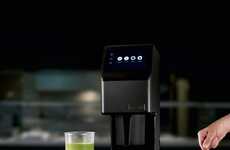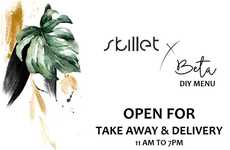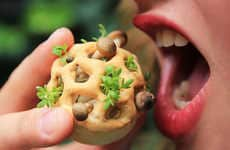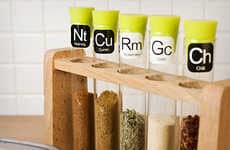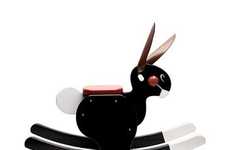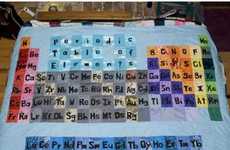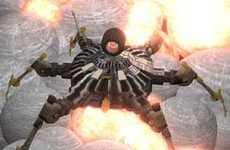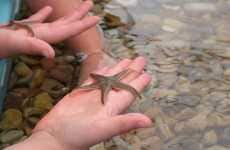
Molecular Gastronomy at the Fat Duck
Bianca — October 18, 2007 — Art & Design
References: fatduck & theglobeandmail
Because of his crazy culinary concoctions, a self-taught cook has turned the Fat Duck into of the world's best restaurants.
The molecular gastronomy and bizarre inventions include "dishes such as 'bacon-and-egg ice cream,' scrambled and frozen at the table in a cloud of liquid nitrogen at -196 degrees," the Globe and Mail said.
A few months ago, Trend Hunter featured the Sound of the Sea at the Fat Duck, a science-fusion cuisine experience that involves donning headphones plugged into an iPhone with special sound effects intended to play up each dish.
"The 'sea' in this multimedia trompe l'oeil is a frothed-up blend of bivalve juice, oysters, cockles, razor clams and three types of seaweed," the paper explained. "The 'sand' is made from eel parts, anchovies and Japanese breadcrumbs that have been dissolved in fish oil, then desiccated into a powder with a chemical called tapioca maltodextrin."
Other molecular gastronomy creations include mango ravioli, "espesso," or coffee whipped to such extremes that you 'eat' it, rather than drink it, Aginate spheres that mock caviar, and Beetroot vapor made by using lecithin.
Check out frozen eggs and bacon:
The mango ravioli how-to video:
DIY "espesso" gourmet whipped coffee:
Fake caviar made of alginate spheres:
Check out Trend Hunter's past feature on the Sound of the Sea at the Fat Duck:
The molecular gastronomy and bizarre inventions include "dishes such as 'bacon-and-egg ice cream,' scrambled and frozen at the table in a cloud of liquid nitrogen at -196 degrees," the Globe and Mail said.
A few months ago, Trend Hunter featured the Sound of the Sea at the Fat Duck, a science-fusion cuisine experience that involves donning headphones plugged into an iPhone with special sound effects intended to play up each dish.
"The 'sea' in this multimedia trompe l'oeil is a frothed-up blend of bivalve juice, oysters, cockles, razor clams and three types of seaweed," the paper explained. "The 'sand' is made from eel parts, anchovies and Japanese breadcrumbs that have been dissolved in fish oil, then desiccated into a powder with a chemical called tapioca maltodextrin."
Other molecular gastronomy creations include mango ravioli, "espesso," or coffee whipped to such extremes that you 'eat' it, rather than drink it, Aginate spheres that mock caviar, and Beetroot vapor made by using lecithin.
Check out frozen eggs and bacon:
The mango ravioli how-to video:
DIY "espesso" gourmet whipped coffee:
Fake caviar made of alginate spheres:
Check out Trend Hunter's past feature on the Sound of the Sea at the Fat Duck:
Trend Themes
1. Molecular Gastronomy - Expanding the boundaries of traditional cuisine through the application of scientific techniques and ingredients.
2. Multimedia Dining - Enhancing the dining experience through the integration of technology, such as sound effects and visuals.
3. Mock Ingredients - Creating culinary imitations using unconventional materials and methods to replicate traditional flavors and textures.
Industry Implications
1. Food and Beverage - Opportunities to innovate and create unique dining experiences using molecular gastronomy techniques and multimedia elements.
2. Technology - Integration of technology into the dining experience, such as virtual reality or augmented reality, to enhance sensory perception.
3. Hospitality - Hotel restaurants and fine dining establishments can adopt molecular gastronomy techniques and multimedia elements to differentiate themselves and offer immersive dining experiences.
6.3
Score
Popularity
Activity
Freshness

